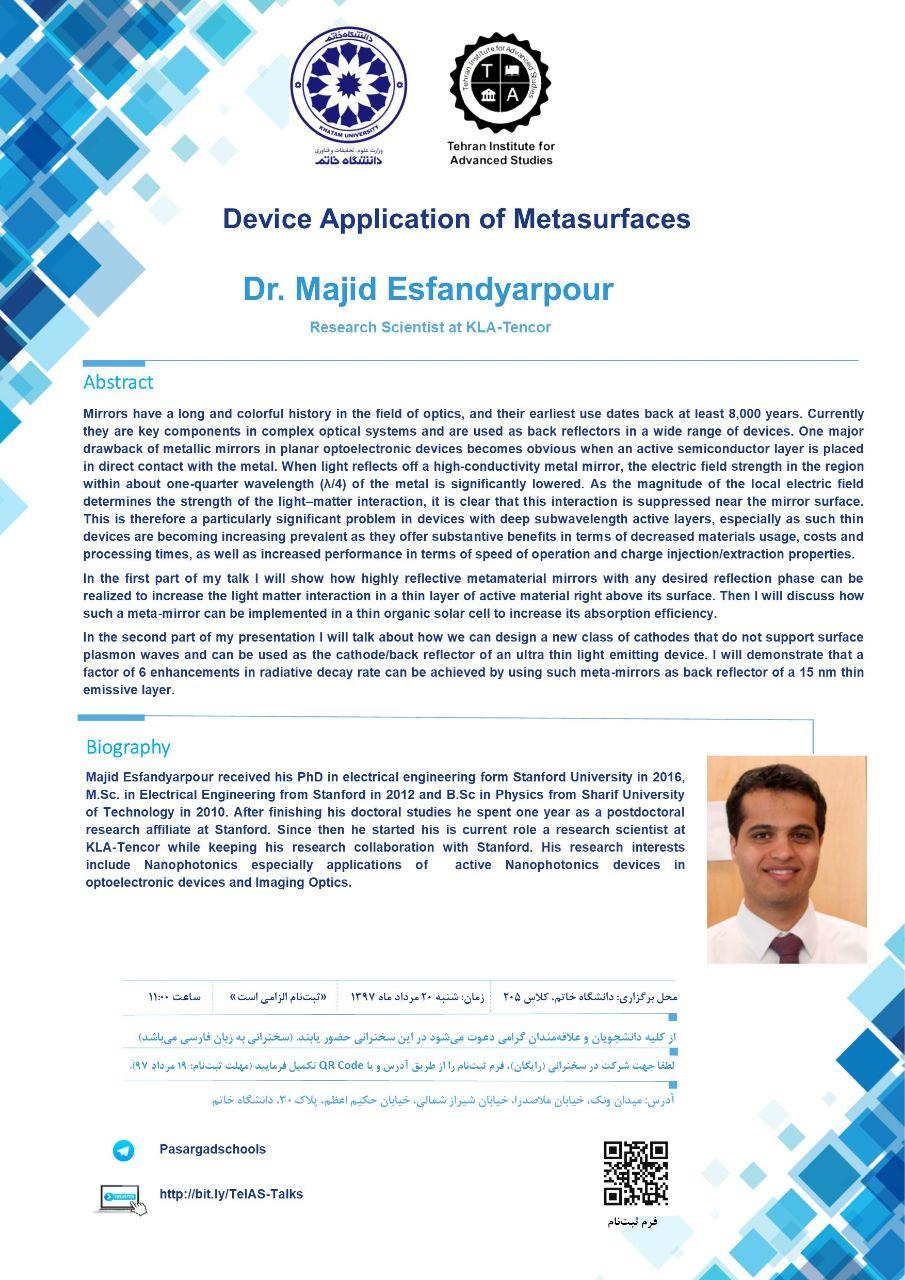
Khatam University, Building No2.
Address: Mollasadra Blvd., North Shirazi St., East Daneshvar St., No.17.
See location on Google map
Dr. Majid Esfandyarpour
Research Scientist at KLA-Tencor
Overview
Mirrors have a long and colorful history in the field of optics, and their earliest use dates back at least 8,000 years. Currently they are key components in complex optical systems and are used as back reflectors in a wide range of devices. One major drawback of metallic mirrors in planar optoelectronic devices becomes obvious when an active semiconductor layer is placed in direct contact with the metal. When light reflects off a high-conductivity metal mirror, the electric field strength in the region within about one-quarter wavelength of the metal is significantly lowered. As the magnitude of the local electric field determines the strength of the light-matter interaction, it is clear that this interaction is suppressed near the mirror surface. This is therefore a particularly significant problem in devices with deep sub wavelength active layers, especially as such thin devices are becoming increasing prevalent as they offer substantive benefits in terms of decreased materials usage, costs and processing times, as well as increased performance in terms of speed of operation and charge injection/extraction properties.
In the first part of my talk I will show highly reflective meta material mirrors with any desired reflection phase can be realized to increase the light matter interaction in a thin layer of active material right above its surface. Then I will discuss how such a meta-mirror can be implemented in a thin organic solar cell to increase its absorption efficiency.
In the second part of my presentation I will talk about how we can design a new class of cathodes that do not support surface plasmon waves and can be used as cathode/back reflector of an ultra thin light emitting device. I will demonstrate that a factor of 6 enhancements in radiative decay rate can be achieved by using such meta-mirrors as back reflector of a 15 nm thin e missive layer.
Biography

Majid Esfandyarpour received his PhD in electrical engineering from Stanford University in 2016, M.Sc. in Electrical Engineering from Stanford in 2012 and B.Sc in Physics from Sharif University of Technology in 2010. After finishing his doctoral studies he spent one year as a postdoctoral research affiliate at Stanford. Since then he started his is current role a research scientist at include Nanophotonics especially applications of active Nanophotonics devices in optoelectronic devices and Imaging Optics.
